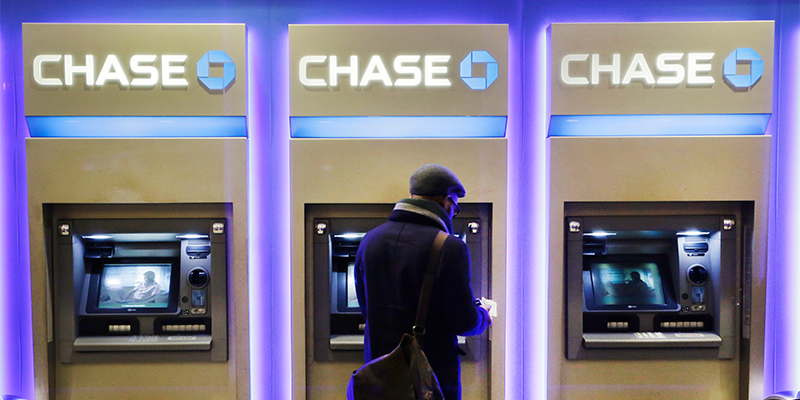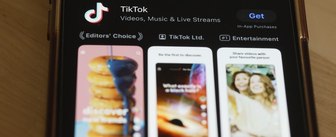New data illustrates where current customers of Chase, Bank of America, Citibank, and Wells Fargo diverge in opinion
Not all customers are created equal. Take the banking industry, for example. While nearly half of US adults think all banks are basically the same, additional data shows the many ways in which each institution's customer base is unique.
New research from YouGov Profiles points to the specific spots where this divergence in opinion occurs among the customers of America's largest retail banks: Chase, Bank of America, Citibank, and Wells Fargo.
To start, consider a person's sense of humor. Numbers suggest that current customers of Citibank (i.e. people who have an account with the bank) are between two to five percentage points more likely than customers of the other three banks to say that, lately, they've found comedy based on everyday observations quite funny. At the same time, Chase customers are most likely to enjoy funny and surreal sketches, while Bank of America customers are most likely to laugh at commentary on news and current affairs. Wells Fargo customers, on the other hand, are most likely to consider comedic impressions funny.
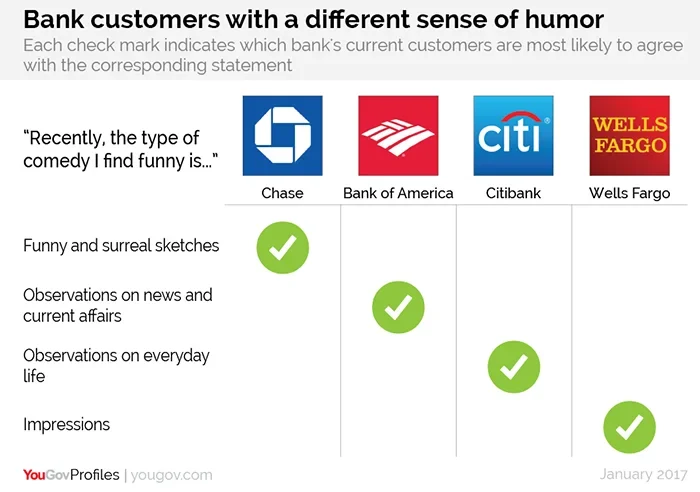
Customers of each bank also demonstrate different attitudes about their very character. Bank of America customers, for example, are most likely to say they're particularly gifted with social skills. Wells Fargo customers count their imagination as a personal strength, while Chase customers feel the same about manual coordination.
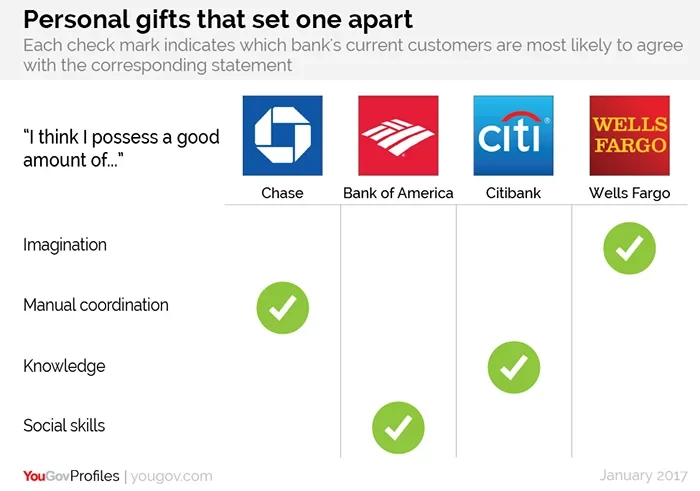
When it comes to the topic of money and banking, Citibank customers are the most likely group to think that carrying some degree of personal debt is normal. Chase customers, however, indicate that they're the most likely group to think personal debt is stressful.
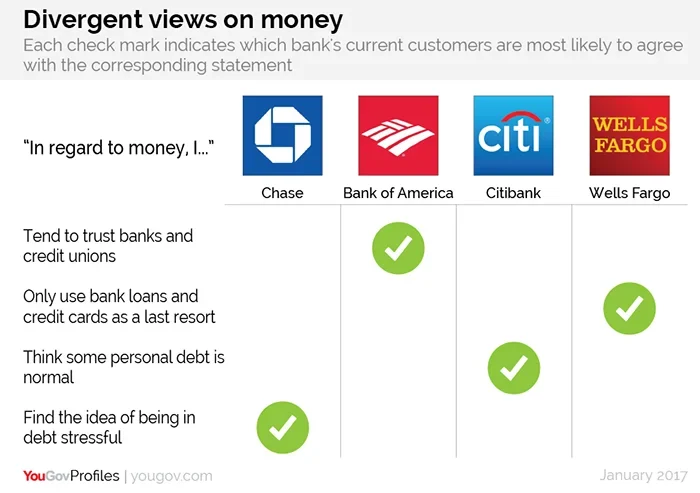
As for opinions on advertising, Bank of America customers like seeing "real-looking people" in commercials, while Wells Fargo customers appreciate it when companies have a moral message.
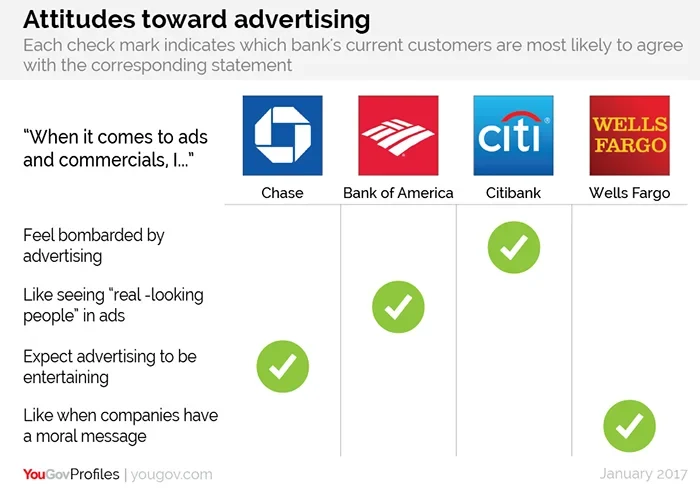
Differences aside, plenty of similarities also exist. For instance, when asked if they manage their finances well, customers of Chase, Bank of America, Citibank, and Wells Fargo all said they do, and at rates higher than the average US adult. Likewise, customers of all four banks are slightly more likely than the general public to say advertising helps them choose what to buy.
